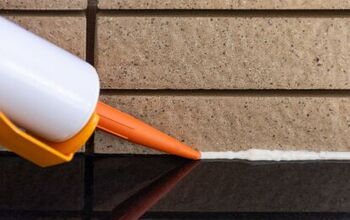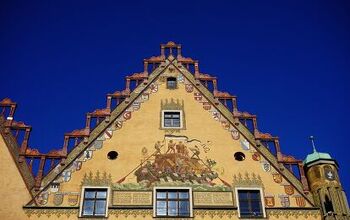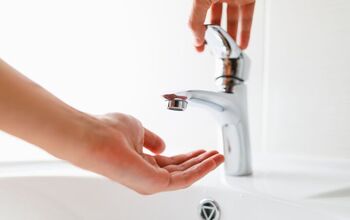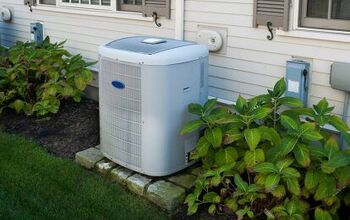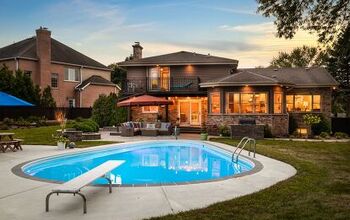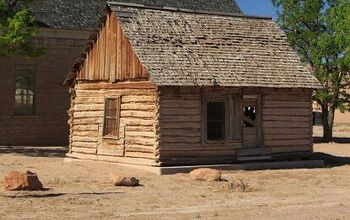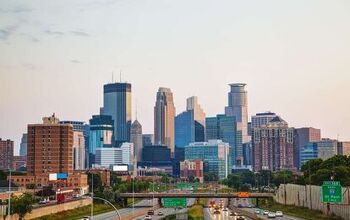Best Plants For Flood-Prone Yards

All plants need water to survive, but some need more than others. When you live in a flood-prone area and have soil that is constantly wet, you face unique home gardening challenges. Some plants get waterlogged and develop rotted roots in damp soil, while others thrive. If you have a saturated yard, you need to grow plants that do well in flood-prone environments.
Some plants that do particularly well in flood-prone soil include tall grass-like plants, including sedges and rushes. There are many beautiful flowers that like wet soil, including the cardinal flower, cone flower, some lilies, marsh marigolds, and marsh cinquefoil. Some trees are also great for flooded soil, including willows and river birch trees. Many ferns can provide rich greenery and prevent soil erosion in wet regions, as they soak up water in flooded soils.
When you live in a wet climate or an area that experiences frequent heavy storms, you need to think carefully about what you plant in your yard. Some plants will rot and die in these conditions, while others will be quite happy. Some plants can even help absorb the extra moisture in the soil and help the overall health of your yard. Below is a list of the best plants to grow when you live in a flood-prone area.
14 Great Plants To Grow In Flood-Prone Areas
1. Sedges
If your yard floods and leaves pools of water where your lawn once was, then you should rethink the type of grass you grow in these spots. Sedges are a type of ornamental grass, and many types thrive in saturated soils.
Carex sedges, in particular, are a great option for those in flood-prone areas. These sedges have adapted to wet climates and can absorb oxygen even when their roots are flooded. Another great benefit of this ornamental grass is that the root system is dense, which helps prevent soil erosion in flooded areas.
2. River Birch
If you want to plant a tree to help soak up the extra moisture in your wet yard, then a river birch is a great option. This tree is known for its sponge-like ability to soak up water. This makes it a great tree option for those who live in flood-prone areas but hate when the yard turns into a pool of water.
The river birch is one of the best plants to grow for storm-water management because its shallow roots soak up water from a wide radius.
3. Rushes
Rushes, like sedges, are tall plants that thrive in wet climates and are fantastic at combating soil erosion. There are more than 400 types of rush plants. They are not grasses, but instead stick-like flowering plants.
They love wet soil and have a dense root system. These roots help keep topsoil in place during floods and heavy rains, which is why they are so great at preventing erosion.
4. Ferns
There’s a reason you see so many ferns in rainforests and near lakes and rivers. It’s because many fern species love wet soil. If you have a flood-prone yard and want to plant beautiful greenery that won’t die in the rainy season, then ferns are a great option.
Some of the best ferns to plant in flood zones include cinnamon ferns, ostrich ferns, and royal ferns. All three of these species do well in the wet and fluctuating conditions found in flood zones.
5. Willow Tree
Willow trees are found with their branches cascading along rivers and by lakes throughout the world. In addition to providing picturesque landscapes, willows serve another purpose. They are one of the best trees for wet regions because they absorb tons of water.
They also help cleanse the soil, as they absorb impurities and toxins along with water, making the soil and water cleaner. A willow tree can also withstand dry conditions, and so it is an ideal choice for those who live in areas with heavy storms and a dry season.
6. The Cardinal Flower
If you have a constantly wet yard, but are desperate for vibrant flowers, then you should plant the cardinal flower. This plant is known for its stunning red blossoms and also for its resilience in wet climates.
Unlike many other flowers, the cardinal flower has adapted to wet environments and can absorb oxygen through its roots. Where other flowers would suffer from root rot, the cardinal flower does well. This makes it an ideal flower to grow when you have constantly saturated soil.
7. Marsh Cinquefoil
The marsh cinquefoil is another great wetland flowering plant. It has unique star-shaped magenta flowers. These lovely flowers bloom in summer and provide plenty of nectar for various pollinators. It does particularly well in cooler wetland areas, making it ideal for those in flood-prone areas that experience four distinct seasons.
8. Camas
The camas plant is a purple flowering perennial that is as useful as it is beautiful. This plant has been used as a food source by indigenous people for centuries, as these pretty flowers are edible. Camas are part of the lily family and thrive naturally in wetlands. They are known for their ability to survive during floods and in particularly saturated soil.
9. Ogon
If you are a fan of decorative grass but want something with color and style, then Ogon is a perfect choice. This grass has beautiful yellow and green variegated leaves, which give color to your wetland yard. It does best in consistently wet soil, making it great for those who have boggy areas on their property.
10. Cutleaf Coneflower
The cutleaf coneflower is an excellent plant to grow for those with wet yards who want to add color to their landscape while also attracting pollinators into the yard. Some coneflowers do well in dry soils, but the cutleaf coneflower is particularly well-suited for wet climates.
This beautiful yellow coneflower is edible, making it a pretty and useful addition to any rain garden.
11. Leopard and Plantation Lilies
If you are a fan of the delicate and beautiful lily flower, then you’ll be thrilled to learn that several lily species do well in wet and flood-prone yards. The stunning leopard lily, with its signature orange spotted flowers, does quite well in wet soil.
The plantation lily is particularly suited for wet and flooded soil. Also referred to as hostas, the plantation lily is one of the few flowering plants that thrive in waterlogged conditions.
12. Iris
If you love iris plants, then several species of this delicate flower are well-suited for wet soil. The Siberian iris is often considered the best iris to plant in wet soil.
Japanese and blue flag irises are also great options for those who live in wet and flood-prone areas. Ensure you choose an iris species that will thrive in your growing zone, as well as in your wet soil.
13. Water Avens
Water avens are easy to spot with their colorful and drooping bell-like flowers. These plants are almost always found in wet and waterlogged soil. This plant is used as a natural remedy as well, often used to help with digestive issues. This makes it a wonderful plant to grow in flooded areas when you want something that flowers and is medicinal.
14. Marsh Marigolds (Kingcups)
With a name like marsh marigolds, it’s no surprise this vibrant yellow flower likes wet soil. Also commonly called kingcups, the marsh marigold is a perennial that is native to marshlands and wet climates.
It has resilient yellow blossoms that come back year after year. This low-maintenance plant makes it a great option for those who want beautiful flowers year after year, but don’t have lots of time to dedicate to gardening.
Summing Up The Best Plants For Flood-Prone Yards
Wet soil can be challenging to work with. Not only is it messy, but there are a lot of plants that simply can’t survive in waterlogged soil. While flood-prone yards aren’t always easy to garden in, there is hope.
Many great plants thrive in wet yards, including flowers like certain irises, coneflower, and lily varieties. Marsh marigolds and cardinal flowers are particularly suited to wet soil. Willow and river birch trees are fantastic at absorbing excess water, while sedges and rushes are great at preventing soil erosion in regions with heavy rains.
Related Guides:
- Can Plants Survive Flooding?
- How To Revive Plants After A Flood
- Is It A Bad Idea To Buy A House In A Flood Zone?

Tom Gaffey is an expert writer who currently resides in Washington D.C. Tom has a passion for real estate and home improvement writing, as well as travel and lifestyle writing. He lived the last twelve years in Hawaii where he worked closely with luxury resorts and event planners, mastering his knowledge of aesthetics and luxury products. This is where he found his passion for home improvement and a keen interest in DIY projects. Currently, Tom resides in Washington D.C, and also working on his debut fiction novel.
More by Tom Gaffey











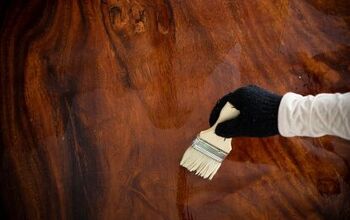
![10 Best Electric Lawn Mowers - [2022 Reviews & Top Rated Models]](https://cdn-fastly.upgradedhome.com/media/2023/07/31/9070486/10-best-electric-lawn-mowers-2022-reviews-top-rated-models.jpg?size=350x220)
